Publikace, nahrávky a jiné výstupy
Přehled toho, co jsem napsal a zveřejnil (jako sociolog) nebo nahrál a vydal (jako muzikant). Prostě veřejně dostupné "výstupy". V případě, že je to právně a technicky možné, postupně sem dávám k dispozici i plné texty a do příslušných oddílů hudební sekce pak i nějaké hudební ukázky ve formátu mp3.
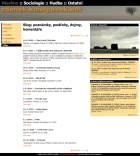
KONOPÁSEK, Z. (2013): Simulakrum jako nadávka? Blog Zdeňka Konopáska, 29. 1. 2013. Dostupné na adrese http://zdenek.konopasek.net/index.php?m=16&b=16&i=2728
::::Bělohradskému se opět podařilo vyprovokovat mne k sepsání malého sociologického komentáře - víc o sociologii než o samotných presidentských volbách.
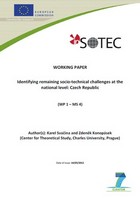
SVAČINA, K. & KONOPÁSEK, Z. (2012): Identifying remaining socio-technical challenges at the national level: Czech Republic. Working paper of the InSOTEC project (WP 1 – MS 4). Available at http://www.insotec.eu/publications/file-cabinet
::::This report describes the history, recent developments and the current situation of the management of highly radioactive waste and spent nuclear fuel in the Czech Republic, with a particular focus on the development of geological disposal for this kind of waste. Special attention is given to the interplay of social and technical aspects of the process. The first chapter gives an overview of the state of affairs and sketches out the trajectories leading to it. The institutional background, legislative framework and relevant government policies, as well as the role of affected communities and other civil society stakeholders are considered. The second chapter tries to identify the main socio-political challenges that the process of geological disposal development is currently facing. By socio-political challenges we mean problems and obstacles that complicate the negotiations between the implementer and other relevant groups, be it other state institutions, municipalities, or NGOs. The third chapter takes these observations a step further, and tries to identify significant socio-technical challenges within this process. By looking at the problems as socio-technical, we want to emphasize and highlight the fact that there is interplay of social and technical aspects, and that it is often problematic or counterproductive to consider them as separate, purely social and purely technical aspects. The ultimate goal of identifying significant socio-technical challenges then is to sketch out problems of interest for case study research in the second work package of InSOTEC.
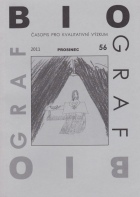
KONOPÁSEK, Z. (2011): Aby se pracovalo pěkněji: ATLAS.ti, verze sedmá. Biograf (56): 91-109
::::Moje doporučení přejít z předchozí na aktuální verzi ATLAS.ti není tak jednoznačné jako minule. Nenese to s sebou tolik analytického dobrodiní, které by vůbec nebylo dostupné dříve. Až na výjimky se pokrok soustředí na větší pohodlí (snadnější ovládání, lepší přehled). S programem se vám jistě bude pracovat pěkněji. Nepostradatelný bude tenhle upgrade v prvé řadě pro ty, kdo chtějí pracovat přímo se zvukem či videem. A také pro ty, kteří měli časté potíže s dostupností primárních dokumentů. Jinak se jedná o nahromadění drobných úprav a vylepšení či dotažení již existujících funkcí. Žádná revoluce to není; ale kus úsilí vyjít vstříc uživatelům ano. Pokud máte peníze a s ATLAS.ti vážné úmysly, nerozmýšlejte se a sedmičku si pořiďte. Ale pokud jedno nebo druhé chybí, nezoufejte. S šestkou to klidně ještě nějaký čas vydržíte.
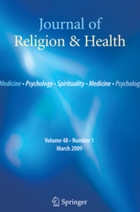
KONOPÁSEK, Z. / PALEČEK, J. (2012): Apparitions and possessions as boundary objects: An exploration into some tensions between mental health care and pastoral care. Journal of Religion and Health, 51 (3): 970-985
::::Apparitions and possessions can be taken as genuine spiritual events or as symptoms of psychopathology. We focus upon occasions when the two seemingly conflicting “interpretations” co-exist in order to explore these phenomena as a kind of boundary objects – polymorphous realities stable and graspable enough, yet belonging to different worlds at once. Related diagnostic knowledge is often uncertain and always incomplete. Yet it enables authoritative and effective professional interventions. We conclude by discussing the relevance of such a view for contemporary efforts to validate patients’ spiritual experiences within mental health care.
KONOPÁSEK, Z. (2011): Je prý třeba změnit ten postoj a ptát se... Blog Zdeňka Konopáska, 26. 2. 2011. Dostupné na adrese http://zdenek.konopasek.net/index.php?m=151&i=1871&b=151
::::Tak to říkal Václav Bělohradský o sociální reformě v Otázkách Václava Moravce (1. 2. 2011) a já se ošíval.
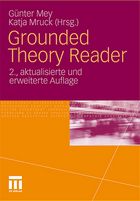
KONOPÁSEK, Z. (2011): Das Denken mit ATLAS.ti sichtbar machen: Computergestützte qualitative Analyse als textuelle Praxis. In: G. Mey & K. Mruck, eds.: Grounded theory reader. 2. aktualizované vydání. Wiesbaden: VS Verlag. Str. 381-403
::::How is a new quality of reading, which we call "sociological understanding", created during the process of qualitative analysis? A methodological (conventional) answer to this question usually speaks of mental processes and conceptual work. This paper suggests a different view—sociological rather than methodological; or more precisely a view inspired by a contemporary sociology of science. It describes qualitative analysis as a set of material practices. Taking grounded theory methodology and the work with the computer programme Atlas.ti as an example, it is argued that thinking is inseparable from doing even in this domain. It is argued that by adopting the suggested perspective we might be better able to speak of otherwise hardly graspable processes of qualitative analysis in more accountable and instructable ways. Further, software packages would be better understood not only as "mere tools" for coding and retrieving, but also as complex virtual environments for embodied and practice-based knowledge making. Finally, grounded theory methodology might appear in a somewhat different light: when described not in terms of methodological or theoretical concepts but rather in terms of what we practically do with the analysed data, it becomes perfectly compatible with the radical constructivist, textualist, or even post-structuralist paradigms of interpretation (from which it has allegedly departed by a long way). (Translated to German and reprinted from Historical Social Research 2007/FQS 2008)

Zátory - bezpochyby nejméně známá legendární kapela. Dnes už archivní nahrávky vzniklé za zcela amatérských podmínek, ale s nebývale kvalitním zvukem. V souboru, který působil přes 2 roky na konci první pětiletky nového milénia se sešly jemné a křehké duše alternativních veteránů – vyškolených přehrávkami PKS a ostatními radostmi leckdy až příliš reálného socialismu... Zátor [je slovo] pozapomenutého významu, značící barieru v přirozeném proudu řeky, hlubinu a vír – navíc fonemicky nejblíže slovu Satori. Možná – řečeno s klasikem „slábnou slova zlá i dobrá“ – ale dokud lidé žijí, bude jejich význam obnovován. Neboť „dobří lidé kráčí vyrovnaným krokem – a ostatní kolem nich tančí dobové tance“. (ze sleevenote)
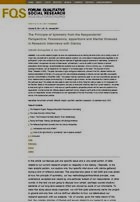
KONOPÁSEK, Z. / PALEČEK (2011): The principle of symmetry from the respondents’ perspective: Possessions, apparitions and mental illnesses in research interviews with clerics. Forum Qualitative Sozialforschung / Forum: Qualitative Social Research, 12 (1): čl. 12, http://nbn-resolving.de/urn:nbn:de:0114-fqs1101129
::::We study how experiences such as hearing the voice of the Lord or having a vision of Virgin Mary are dealt with in psychiatry and catholic pastoral practice. How the status of these phenomena is negotiated by the participants? Under what conditions they become an instance of legitimate religious experience or, alternatively, symptoms of mental illness? We approach the study of these issues “symmetrically” - we do not prefer a priori medical or spiritual explanations. Some time ago, we demonstrated and explained such an approach (which is common, e.g., in contemporary sociology of science), and its relevance for our research, in an analytic paper on the movie “The exorcism of Emily Rose” (2005). The paper discusses a highly ambiguous relationship, pictured in the film, between medical and spiritual interpretation of the story of a young girl who was considered possessed by demons and who died after unsuccessful exorcism (Konopásek & Paleček 2006). Now, the question is: can such a symmetrical approach be of any relevance also for people we are studying? In an attempt to give an answer, we have interviewed four catholic priests on this issue. The priests had been asked to watch the movie on Emily Rose and read our paper on it in preparation for the interview. Based on these discussions (and also on our current research in general), we would like to shed some light on whether and in what ways our specific epistemic perspective coheres with the views and positions of our respondents; and also, how this reflexive research experiment contributed to our own understanding of the role of the symmetry principle in our current research project.

KONOPÁSEK, Z. (2010): Co znamená "sociální konstrukce"? Blog Zdeňka Konopáska, 3. 11. 2010. Dostupné na adrese http://zdenek.konopasek.net/index.php?m=151&i=1490&b=151
::::Dnes mám v rámci oslav 20-letého výročí oslav Centra pro teoretická studia, stejně jako další kolegové, krátce promluvit na libovolné téma ze svého oboru. Rozhodl jsem se v této mini-přednášce shrnout několik vysvětlení k pojmu, který dnes dělá tak často sociologii ostudu, a přitom by nemusel. Tady je ta řeč písemně.
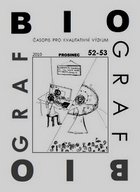
KONOPÁSEK, Z. (2010): V čem spočívá pravda náboženské skutečnosti? Sociologický pohled na mariánská zjevení a démonické posedlosti. Biograf (52-53): 89-101
::::V tomto textu shrnuji východiska a závěry tříletého výzkumného projektu "Jak se dělá náboženská skutečnost: Zjevení a posedlost démony jako praktický a kolektivní výkon" (GAČR 403/08/1758). Opírám se při tom o dosud napsané články, většinou spolu s Janem Palečkem. Stručně: Spojujícím momentem různých našich analýz je mnohotvárnost a praktická různorodost toho, čemu říkáme náboženská víra. Inspirovali jsme se přístupy z oboru současných vědních studií a pokoušíme se o jakousi neredukcionistickou sociologii náboženství. Zvolili jsme za předmět studia podivné, nevšední a v mnoha ohledech sporné situace (zjevení, posedlost), které rozdělují nejen věřící a nevěřící, ale i mnohé věřící navzájem, a které nám umožňují zachytit i tak dlouhodobě a dokonale sedimentovanou skutečnost, jakou je skutečnost náboženská, v pohybu a rozpolcení.








 [EPP 027-2]
[EPP 027-2]
